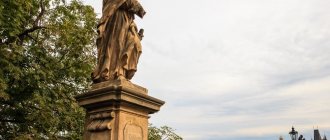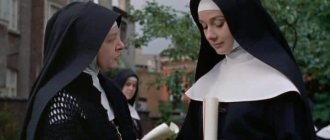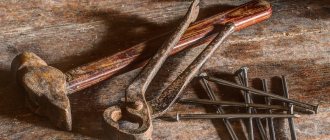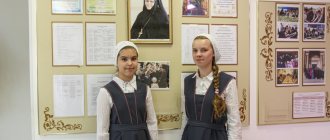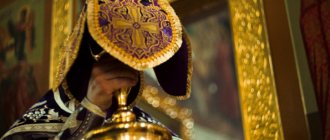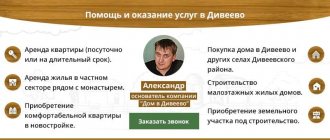ORTHODOX CINEMA HOME
Orthodox cinema hall Glory to God for all Films about monasteries online.
Title: Optina Pustyn.
Documentary film about the monastery Year of release: 2021 Genre: Documentary Director: Georgy Ananov Duration: 40:00 Optina Pustyn. It is unlikely that people come here by chance or are just passing through. The location of the monastery completely eliminates any tourist spontaneity: it is located a few kilometers from Kozelsk, in a centuries-old pine forest on the banks of the Zhizdra River. And even if it seems to you that you came here by accident, do not call it an accident. Because this is your personal invisible invitation. And you will leave here a different person. At the very least, you will think about many things. It is not without reason that they say that this is one of the most revered and prayed places in Orthodox Rus'.
Show/Hide
Name: Kiev-Pechersk Lavra. Millennium Photography Year of release: 2021 Genre: Documentary Director: Lyusine Kolykhalina Directors: Vladislav Robsky, Elena Legeyda Duration: 01:03:10
The Kiev Pechersk Lavra is the first monastery in Rus', founded by the Monk Anthony after he returned from Holy Mount Athos and brought the Athos tradition of monastic life to our land. From this moment, a thousand years ago, the history of all monasticism in Rus' began. The documentary project Kiev Pechersk Lavra - the first monastery in Rus' will tell about the thousand-year history of the Kiev Pechersk Lavra, the fate of the monastery in the twentieth century, during the era of the most severe trials, and its revival after the restoration of monastic service here.
Show/Hide
Title: Marvelous Diveevo Year of release: 2021 Genre: Documentary Director: Andrey Kholenko Duration: 53:14
Many pilgrims come to Diveevo from the farthest corners of Russia for Diveevo’s grace - to pray in churches, walk along the Holy Canal with the Mother of God prayer on their lips, plunge into holy springs and quench their thirst from spiritual springs. To remember their pilgrimage to Diveevo, many take away icons, books, and postcards with views of the monastery. But the monastery still does not have a film about this unique spiritual center of Russia. Filming in the monastery churches, on the Mother of God Canal and at holy springs laid the foundation for the creation of a film about the history and present day of the Holy Trinity Seraphim-Diveevsky Monastery. Thanks to the film, even more people will be able to see these blessed places, and those who have already visited Diveyevo at least once will again experience the special Diveyevo joy.
Show/Hide
Title: Tales of Mother Frosya. About the Diveyevo Monastery. Film by Archimandrite Tikhon (Shevkunov) Genre: Documentary Year of release: 1989 Duration: 25:43
This film was filmed in Diveevo during the November holidays of 1988. It was released in 1989, but was immediately banned (it became the only film banned during “perestroika”). And only a few years later the audience was able to see it. The last Diveyevo nun, Mother Margarita, tells not only the historical, but, most importantly, the spiritual truth - about how the revolution was carried out, how the monastery of St. Seraphim was ruined, how a handful of “Seraphim novices” found the strength to resist the grandiose destructive machine for decades. This ruthless Moloch physically destroyed tens of millions of people, and spiritually almost the entire country, crippled future generations, but could not do anything with the nun, whose spiritual strength and beauty amaze and teach the viewer even today. Show/Hide
Title: Dear Love. Film by Elena Kozenkova. About modern female monasticism. Film about the Holy Trinity Stefano - Makhrishchi stauropegial convent Genre: Documentary Year of release: 2007 Director: Elena Kozenkova Duration: 1:36:17
The sisters of the Stefano-Makhrishchi Monastery talk about the path to monasticism and life in tonsure. Today everything is given for faith in God, for the revival of monasteries and churches. But in spiritual life this should not lead to relaxation. A monk is a warrior, he must always be at war with himself, his passions, have a special faith, be completely devoted to the will of God... Elizaveta (Zhegalova), abbess of the Stefano-Makhrishchi Monastery. Monasticism is the mystery of God. After tonsure, everything changes - a different outlook on life, a different attitude towards people. Only the appearance remains the same, the facial features, but the soul is completely different... Arsenia (Leshkovich), nun My parents suffered greatly: their only daughter and such an incomprehensible act - leaving for a monastery. But the Lord gave me such faith that through this sorrow, which is humanly cruel, they will come to God... Sergia (Sofoikhina), nun Show / Hide
Title: Pochaev Year of release: 2006 Genre: Documentary Duration: 63:54. Director: Tatyana Yatsyna Starring: Liliya Rebrik, Svetlana Orlichenko, Vadim Gorkutsenko, Anna Karashchenko
“Pochaev” is a film about the history of the Holy Dormition Pochaev Lavra told by a man who, having once visited this monastery, felt that incredible changes had occurred in him, which allowed him to look at the world with different eyes. Since then, whenever possible, he tries to visit there again. So, with our hero, “The Traveler,” we begin the journey. A passing car, a conversation between the Traveler and the driver, from which we learn that the driver’s life - a vain and joyless race for happiness - only distances him from his goal; that often visiting Pochaev for work, he had never been to the Lavra. Then the Traveler, trying to hint to the driver about the reasons for the failures, tells him amazing stories: about the appearance of the Mother of God on Mount Pochaevskaya, about a pile on a stone from which a healing spring flows, about how the Assumption Cathedral was built, and about the huge amount of people come to the Lavra. The driver thinks about it and asks instead of paying for the fare to light a candle for him in the Cathedral. Then the traveler decides to introduce the viewer to one of the monks whom he knows - Father Gerontius. And the monk, as if continuing the story about the Lavra, told amazing stories about the miracles that took place on Pochaevskaya Mountain. The first story is about the miracle of cutting off the head of a monk, who then carried his own head for several kilometers and laid it next to the Pochaev Icon. The second story is about how one monk was taken prisoner by the Turks, and he was miraculously transported back to Pochaev. An amazing story about the first abbot of the monastery, St. Job. About how he rebuilt the monastery, and what feats of prayer he performed during Lent. One of the most striking episodes in the film is the story of how selected Turkish troops tried to capture the monastery, and how, thanks to the intercession of the Mother of God, they failed. Then the traveler touches another miracle of the Pochaev Lavra; on the feast of St. Amphilochius, he manages to venerate the relics of the saint. This touch helps him talk about the life of an amazing monk of our days - Father Joseph. About how he helped people, how he was taken and tortured in a psychiatric hospital, about what amazing miracles happened to people who came to the Rev., about his death and about the miraculous discovery of his incorruptible relics. The film ends with a calm monologue of a young monk - father Gerontia. Show/Hide
Title: Pskov-Pechersk Monastery Genre: Documentary Year of release: 2007 Director: Archimandrite Tikhon (Shevkunov) Duration: 1:18:05
This film was filmed in 1986 in the Pskov-Pechersky Monastery, when many elders were still alive, such as Archimandrite Seraphim, Archimandrite Theophan, Schema-Archimandrite Alexander, Archimandrite Nathanael, Schema-Abbot Melchizedek, Archimandrite John. You will see unique footage of amazing and great ascetics, whom the Lord destined to live most of their lives during the years of persecution. They were able, according to the word of the Apostle Paul, by fighting a good fight, to preserve the treasure of faith and bring to God the perfect spiritual fruit of Christian life: “love, joy, peace, long-suffering, kindness, mercy, faith, meekness, self-control.” The Apostle Paul adds precisely about such people of God: “against such there is no law... - those who are Christ’s have crucified the flesh with its passions and lusts.” Show/Hide
Title: Pilgrimage to Athos 2013 Year of release: 2013 Genre: Documentary Author: Gennady Volik Duration: 02:36:10
Together with you and our pilgrim group, we will go to Holy Mount Athos for the first time. For seven days we will pray and visit various monasteries. If God willing, we will climb to its highest point, and then go to the Italian city of Bari in order to venerate the relics of St. Nicholas the Wonderworker and, of course, we will visit all those holy places that will meet on our way. This trip is also dedicated to the 70th anniversary of the martyrdom of our heroes - the Young Guards of Krasnodon. The shrines of Greece will make a great impression on you. You will be invisibly present in our pilgrimage group. We hope that this film will be interesting, beneficial and educational. Author: Gennady Volik, Lugansk. Show/Hide
Title: Russians on Mount Athos Year of release: 2013 Genre: Documentary Director: Panayotis Tsatsanadis Duration: 01:09:51
The film is dedicated to the history of Russian monasticism on Mount Athos. We will trace its path from its founding to its heyday at the turn of the 19th and 20th centuries, we will get acquainted with the tragic fate of Russian monks after the October Revolution in 1917 and, finally, the revival of Russian monasticism that has begun in our time. You will get acquainted with the charming landscapes of Athos and the Russian monasteries of the Holy Mountain. We will visit the monastery of St. Panteleimon, Nagorny Rusik and the ancient monastery of Xylurgu; in the monasteries of St. Andrew the First-Called, Prophet Elijah, Thebaid and Krumitsa; in the hostel cells of the Holy Cross, St. John Chrysostom and many others... Show / Hide
Title: Athonite Cells Year of release: 2012 Genre: Documentary Director: Dmitry Vorobievsky Duration: 56:44
There is Athos of glorious monasteries. There is Mount Athos of ancient history. There is Athos of Great Shrines. But there is another Athos. This is Mount Athos of mysterious caves. Almost imperceptible mountain paths, which from a bird's eye view seem like some kind of intricate writing. Reading them with tired feet is already a feat. And here is the reward. Ahead are the green flowers of cypress trees - a sure sign of a secluded abode. And in it is an old man. This is a special world. Covert. Full of modest, great works. Sounding like a barely audible whisper of prayer that is reflected throughout the Universe. A world often accustomed to blessed deprivations and blissful insults... This is the world of Athonite cells. Show/Hide
Title: Trinity Lavra of St. Sergius Year of release: 2012 Genre: Documentary Director: Sergey Andryushkin Duration: 01:04:16
According to the thought of St. Sergius, the entire Russian land is a reflection of the Holy Trinity. The Trinity-Sergius Lavra is such a reflection. The Revival of the Russian people is associated with the name of St. Sergius of Radonezh. His relics - this is the greatest shrine - rest in this monastery. He hears the prayer of every person who turns to him with faith and love. Show/Hide
My life. A former novice spoke about life in the monastery
First try
I went to the monastery several times. The first desire arose when I was 14 years old. Then I lived in Minsk, studying in the first year of music school. I had just started going to church and asked to sing in the church choir of the cathedral. In the shop of one of the Minsk churches, I accidentally came across a detailed life of St. Seraphim of Sarov - a thick book, about 300 pages. I read it in one fell swoop and immediately wanted to follow the example of the saint.
Soon I had the opportunity to visit several Belarusian and Russian monasteries as a guest and pilgrim. In one of them, I made friends with the brethren, who at that time consisted of only two monks and one novice. Since then, I periodically came to this monastery to live. For various reasons, including due to my young age, in those years I was not able to fulfill my dream.
The second time I thought about monasticism was years later. For several years I chose between different monasteries - from St. Petersburg to Georgian mountain monasteries. I went there to visit and took a closer look. Finally, he chose the St. Elias Monastery of the Odessa Diocese of the Moscow Patriarchate, which he entered as a novice. By the way, we met his deputy and talked for a long time before the real meeting on one of the social networks.
Monastic life
Having crossed the threshold of the monastery with my things, I realized that my worries and doubts were behind me: I was home, now a difficult, but understandable and bright life, full of spiritual achievements, awaited me. It was quiet happiness.
The monastery is located in the very center of the city. We were free to leave the territory for a short time. It was even possible to go to the sea, but for a longer absence it was necessary to obtain permission from the governor or dean. If you need to leave the city, permission had to be in writing. The fact is that there are a lot of deceivers who put on vestments and pretend to be clergy, monks or novices, but at the same time have nothing to do with either the clergy or monasticism. These people go around cities and villages, collecting donations. Permission from the monastery was a kind of shield: just a little, without any problems, you could prove that you belonged, the real one.
In the monastery itself I had a separate cell, and for this I am grateful to the governor. Most novices and even some monks lived in twos. All amenities were on the floor. The building was always clean and tidy. This was monitored by the civilian workers of the monastery: cleaners, laundresses and other employees. All household needs were satisfied in abundance: we were well fed in the fraternal refectory, and they turned a blind eye to the fact that we also had our own food in our cells.
I felt great joy when something delicious was served in the refectory! For example, red fish, caviar, good wine. Meat products were not consumed in the common refectory, but we were not forbidden to eat them. Therefore, when I managed to buy something outside the monastery and bring it into my cell, I was also happy. Without being a priest, there were few opportunities to earn money on his own. For example, they paid, it seems, 50 hryvnia for the ringing of bells during a wedding. This was enough either to put it on the phone or to buy something tasty. More serious needs were provided at the expense of the monastery.
We got up at 5:30, with the exception of Sundays and major church holidays (on such days two or three liturgies were served, and everyone got up depending on which liturgy he wanted or was scheduled to attend or serve). At 6:00 the morning monastic prayer rule began. All the brethren had to be present, except for the sick, absent, and so on. Then at 7:00 the liturgy began, for which the serving priest, deacon and sexton on duty were required to remain. The rest are optional.
At this time, I either went to the office for obedience, or returned to the cell to sleep for a few more hours. At 9 or 10 o'clock in the morning (I don't remember exactly) there was breakfast, which it was not necessary to attend. At 1 or 2 p.m. there was lunch with the obligatory presence of all the brethren. During lunch, the lives of the saints whose memory was celebrated that day were read, and important announcements were made by the monastery authorities. At 17:00 the evening service began, after which there was dinner and the evening monastic prayer rule. The bedtime was not regulated in any way, but if the next morning one of the brethren overslept the rule, they were sent to him with a special invitation.
Once I had the opportunity to perform a funeral service for a hieromonk. He was very young. A little older than me. I didn’t even know him during my lifetime. They say he lived in our monastery, then he left somewhere and was banned. And so he died. But, naturally, the funeral service was performed as a priest. So, all our brethren read the Psalter around the clock at the tomb. My duty once happened at night. In the temple there was only a coffin with a body and me. And so on for several hours until the next one replaced me. There was no fear, although I remembered Gogol several times, yes. Was there pity? I do not even know. Neither life nor death is in our hands, so be sorry - don’t be sorry... I only hoped that he had time to repent before his death. Like each of us, we will need to be in time.
Pranks of novices
On Easter, after a long fast, I was so hungry that, without waiting for the common holiday meal, I ran across the street to McDonald's. Right in the cassock! I and everyone else had this opportunity, and no one made any comments. By the way, many, leaving the monastery, changed into civilian clothes. I never parted with my vestments. While I lived in the monastery, I simply did not have any secular clothing at all, except for jackets and pants, which had to be worn under a cassock in cold weather so as not to freeze.
In the monastery itself, one of the novices’ pastimes was fantasizing about who would be given what name when tonsured. Usually, until the last moment, only the one who tonsures and the ruling bishop know him. The novice himself only finds out about his new name under scissors, so we joked: we found the most exotic church names and called each other with them.
And punishments
For systematic lateness, they could be put on bows, in the most severe cases - on the sole (a place next to the altar) in front of the parishioners, but this was done extremely rarely and was always justified.
It happened that someone left without permission for several days. A priest did this once. They returned him with the help of the governor directly over the phone. But again, all such cases were like children's pranks in a large family. Parents can scold, but nothing more.
There was a funny incident with one worker. A laborer is a layman, a secular person who came to the monastery to work. He does not belong to the brethren of the monastery and does not have any obligations to the monastery, except for general church and civil ones (do not kill, do not steal, etc.). At any moment, the worker can leave, or, on the contrary, become a novice and follow the monastic path. So, one worker was placed at the entrance of the monastery. A friend came to the abbot and said: “What a cheap parking lot you have in the monastery!” And it’s completely free there! It turned out that this same worker took money from visitors for parking. Of course, he was severely reprimanded for this, but they did not kick him out.
The hardest thing
When I first came to visit, the abbot warned me that real life in the monastery differs from what is written in biographies and other books. Prepared me to take off my rose-colored glasses. That is, to some extent, I was warned about some negative things that could occur, but I was not prepared for everything.
As in any other organization, in the monastery, of course, there are very different people. There were also those who tried to curry favor with their superiors, became arrogant in front of the brethren, and so on. For example, one day a hieromonk who was under a ban came to us. This means that the ruling bishop, for some offense, temporarily (usually until repentance) forbade him to perform sacred functions as a punishment, but the priesthood itself was not removed. This father and I were the same age and at first we became friends and talked about spiritual topics. Once he even drew a kind caricature of me. I still keep it with me.
The closer it got to lifting the ban on him, the more I noticed that he was behaving more and more arrogantly towards me. He was appointed assistant sacristan (the sacristan is responsible for all liturgical vestments), and I was a sexton, that is, during the performance of my duties I was directly subordinate to both the sacristan and his assistant. And here, too, it became noticeable how he began to treat me differently, but the apotheosis was his demand to address him as you after the ban was lifted from him.
For me, the most difficult things not only in monastic but also in secular life are subordination and labor discipline. In the monastery it was absolutely impossible to communicate on equal terms with fathers of higher rank or position. The hand of the authorities was visible always and everywhere. This is not only and not always the governor or the dean. It could be the same sacristan and anyone who is above you in the monastic hierarchy. Whatever happened, no later than an hour later they already knew about it at the very top.
Although there were those among the brethren with whom I found a great common language, despite not only the enormous distance in the hierarchical structure, but also the significant difference in age. Once I came home on vacation and really wanted to get an appointment with the then Metropolitan of Minsk Filaret. I was thinking about my future fate and really wanted to consult with him. We met often when I took my first steps in the church, but I was not sure if he would remember me and accept me. Coincidentally, there were many venerable Minsk priests in the queue: rectors of large churches, archpriests. And then the Metropolitan comes out, points at me and calls me to his office. Ahead of all abbots and archpriests!
He listened to me carefully, then talked for a long time about his monastic experience. He talked for a very long time. When I left the office, the entire line of archpriests and abbots looked at me very askance, and one abbot, whom I knew from the old days, said to me in front of everyone: “Well, you stayed there so long that you should have left there with a panagia.” . Panagia is a badge of honor worn by bishops and above. The line laughed, there was a release of tension, but the Metropolitan’s secretary then swore very much that I had taken up the Metropolitan’s time for so long.
Tourism and emigration
Months passed, and absolutely nothing happened to me in the monastery. I very much desired tonsure, ordination and further service in the priesthood. I won’t hide it, I also had bishop’s ambitions. If at the age of 14 I longed for ascetic monasticism and complete withdrawal from the world, then when I was 27 years old, one of the main motives for entering the monastery was episcopal consecration. Even in my thoughts, I constantly imagined myself in a bishop’s position and in bishop’s vestments. One of my main obediences in the monastery was work in the office of the governor. The office processed documents for the ordination of some seminarians and other proteges (candidates for holy orders), as well as for monastic tonsure in our monastery.
Many proteges and candidates for monastic vows passed through me. Some, before my eyes, went from layman to hieromonk and received appointments to parishes. With me, as I already said, absolutely nothing happened! And in general, it seemed to me that the governor, who was also my confessor, to some extent alienated me from himself. Before entering the monastery, we were friends and communicated. When I came to the monastery as a guest, he constantly took me with him on trips. When I arrived at the same monastery with my things, at first it seemed to me that the governor had been replaced. “Don’t confuse tourism and emigration,” some colleagues joked. This is largely why I decided to leave. If I had not felt that the governor had changed his attitude towards me, or if I had at least understood the reason for such changes, perhaps I would have remained in the monastery. And so I felt unnecessary in this place.
From scratch
I had access to the Internet, I could consult on any issues with very experienced clergy. I told everything about myself: what I want, what I don’t want, what I feel, what I’m ready for and what I’m not. Two clergymen advised me to leave.
I left with great disappointment, with resentment towards the governor. But I don’t regret anything and am very grateful to the monastery and the brethren for the experience I gained. When I left, the abbot told me that he could have tonsured me as a monk five times, but something stopped him.
When I left, there was no fear. There was such a leap into the unknown, a feeling of freedom. This is what happens when you finally make a decision that seems right.
I started my life completely from scratch. When I decided to leave the monastery, I not only had no civilian clothes, but also no money. There was nothing at all except a guitar, a microphone, an amplifier and his personal library. I brought it with me from worldly life. Mostly these were church books, but there were also secular ones. I agreed to sell the first ones through the monastery shop, the second ones I took to the city book market and sold there. So I got some money. Several friends also helped - they sent me money transfers.
The abbot of the monastery gave me money for a one-way ticket (we eventually made peace with him. Vladyka is a wonderful person and a good monk. Communicating with him even once every few years is a very great joy). I had a choice of where to go: either to Moscow, or to Minsk, where I lived, studied and worked for many years, or to Tbilisi, where I was born. I chose the last option and within a few days I was on the ship that was taking me to Georgia.
Friends met me in Tbilisi. They helped me rent an apartment and start a new life. Four months later I returned to Russia, where I live permanently to this day. After long wanderings, I finally found my place here. Today I have my own small business: I am an individual entrepreneur, providing translation and interpretation services, as well as legal services. I remember monastic life with warmth.
